What is an Observability Data or Telemetry Data Pipeline?
With digital systems growing more complex and interdependent by the day, understanding their behavior becomes crucial. Observability and telemetry data are the pillars that support today’s most modern, resilient, and scalable systems. On one end, telemetry data enables us to gather raw insights about system performance, user interactions, and traffic patterns. On the other, an observability pipeline processes and presents this information in a comprehensive manner, giving us clear line of sight into the inner workings and health of our platforms.
In this piece, we’ll discuss these pipelines and highlight why they’ve become a vital data management component in today’s era of cloud-native applications and services.
What is Observability or Telemetry Data?
Observability represents the ability to understand the internal state of a system from its external outputs. Logs, metrics, events and traces are known as the four pillars of observability, aka the external outputs. When we use the term, “observability data” or “telemetry data” these are the types of data that we’re referring to.
In order for companies to run their business today, they must have access to this data. It allows them to solve problems quickly, protect against security threats, and improve customer experience. However, the vast majority of this data is not used. We see two main reasons for this:
- Observability data is voluminous and spiky by nature. The volume of logs, for example, that an application produces varies based on a number of factors like how many people are using the app or if there’s an error. This makes it unpredictable and expensive to analyze and store.
- All data is not the same format. Telemetry data is unstructured and not easily consumable by analytics systems. Moreover, varying fromats of data makes it difficult to use. Data consumers spent time and resources on data prep and clean up before they can put the data to any use. If you have any sensitive / PII ifformation in your data, that has to be processed to adhere to compliance regulations.
- Access to data is another issue. Many companies have deep-rooted organizational silos. In these companies it’s common for teams to have their own tools and workflows, which makes it hard to share information. For example, if a dev team has access to logs, but only the SRE team has access to metrics, it’s hard to correlate the two.
Nothing about this is new or surprising. Vendors have been working on ways to solve it and, although these solutions bring all three types of observability data into a single tool, they aren’t optimized for use by all of the data consumers. In organizations that operate with a DevOps / SRE culture engineers from development, operations, and security all need access to their observability data. In order to get to it, I’ve seen teams create manual workarounds that negatively impact operational efficiency. These inefficiencies simply don’t fly anymore because real-time insights can mean the difference between resolving an issue quickly or incurring millions of dollars in damages.
What is an Observability Data Pipeline?
An observability or telemetry data pipeline centralizes observability data from multiple sources, transforms it, enriches it, and routes it to a variety of destinations. This solves multiple problems, including:
- The need to centralize data into a single location.
- The ability to structure and enrich data so that it’s easier to understand and get value from.
- The requirement to send data to multiple destinations and teams for multiple use cases.
- The need to control the volume of data and send only the right data to the right destination, in the right format.
This level of flexibility ensures that everyone can use their tools of choice and avoid costly vendor lock-in. The pipeline also puts controls in place to control data volumes so that everyone in an organization has access to the data they need in real time, without impacting the budget.
How Mezmo Approaches Telemetry Data Pipeline Observability
For more than five years Mezmo, formerly LogDNA, has focused on building a modern log management tool for teams that embrace DevOps. Having learned from hundreds of customers, we’ve built a new telemetry pipeline product that allows organizations to centralize all of their telemetry data from multiple sources, parse, normalize, and enhance it in Mezmo; and then route it wherever they need—for example, to Mezmo Log Analysis for troubleshooting and debugging, to a SIEM for security, or to a data lake for compliance.
By shifting the control point left to the pipeline, Mezmo users can operationalize many use and gain benefits such as:
- Reducing costs by controlling and routing only the required data to the analytics systems
- Making data more valuable via data transformations & enrichment to make data usable and provide additional context
- Gaining deeper insights from data by extracting metrics from logs or creating new ones to provide deep business insight.
- Accelerating resolution times by sending the right data to right systems to reduce MTTD/R
- Improving security posture by helping identify and route relevant telemetry data to SIEM and improving analytics & protection
- Ensuring compliance by managing sensitive information to meet regulatory requirements
Our intuitive UI and robust APIs make it simple to configure DevOps and SRE workflows. Teams can automate ingestion, parsing, filtering, and streaming so that everyone within the organization has access to the data they need, where they need it. Mezmo's vendor agnostic approach makes it easy to send data to multiple tools for immediate insights.
Mezmo has helped thousands of developers and DevOps teams leverage their logs to build and maintain some of the world's most innovative products. Now, Mezmo’s Telemetry Pipeline is helping organizations get even more value from their telemetry data by streaming it to destinations of their choice for a more unified development, security, and compliance practice.
.jpg)

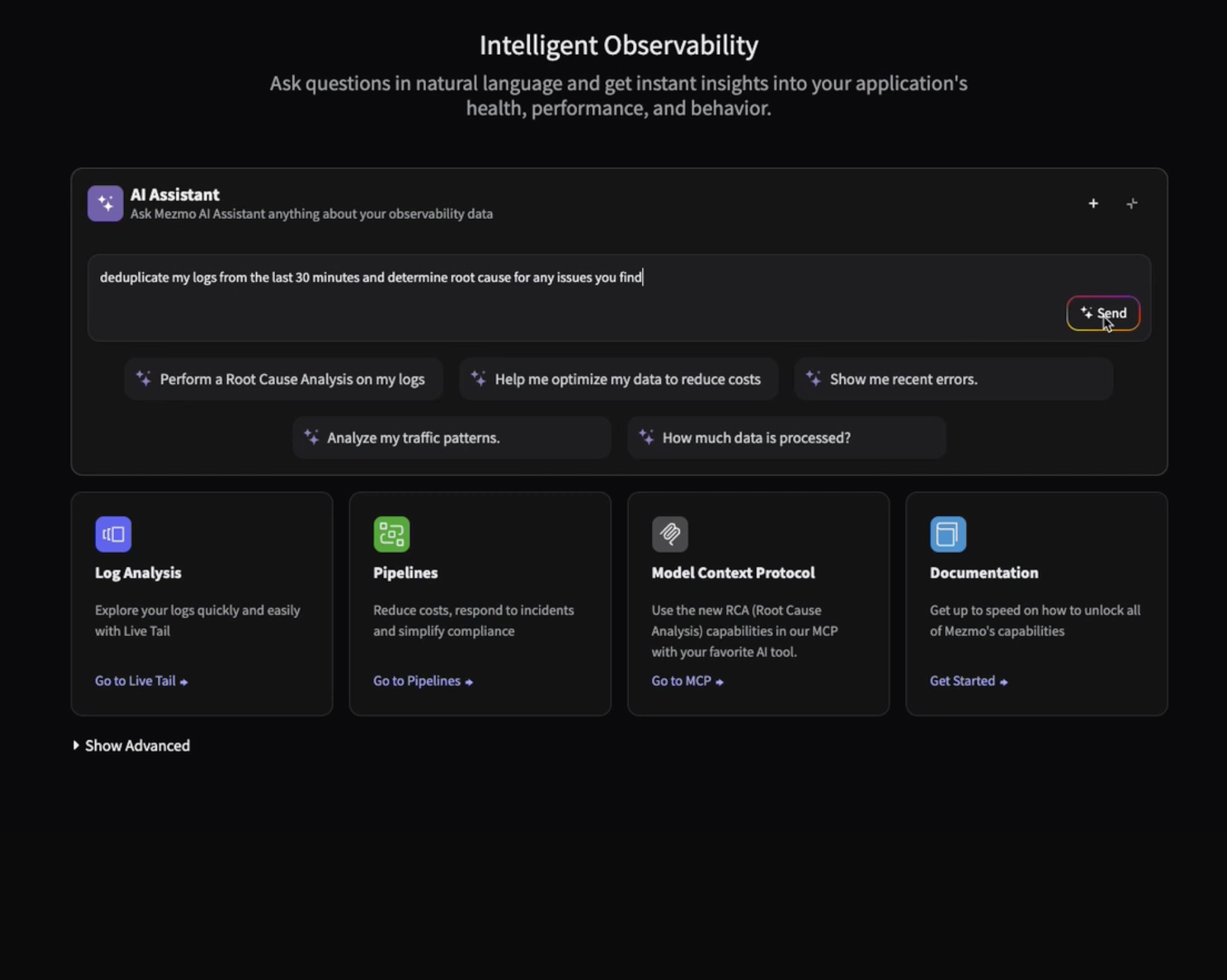
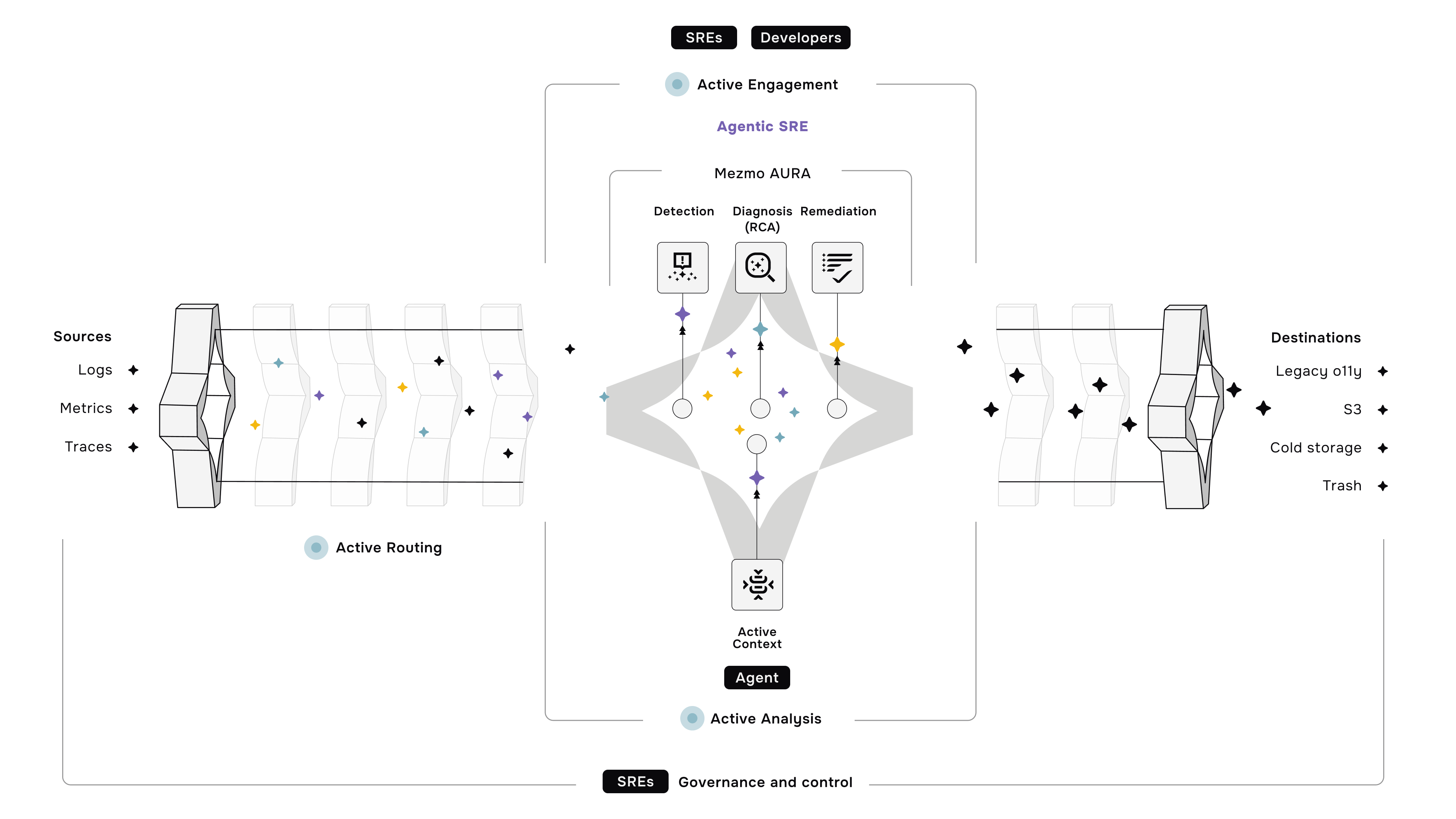






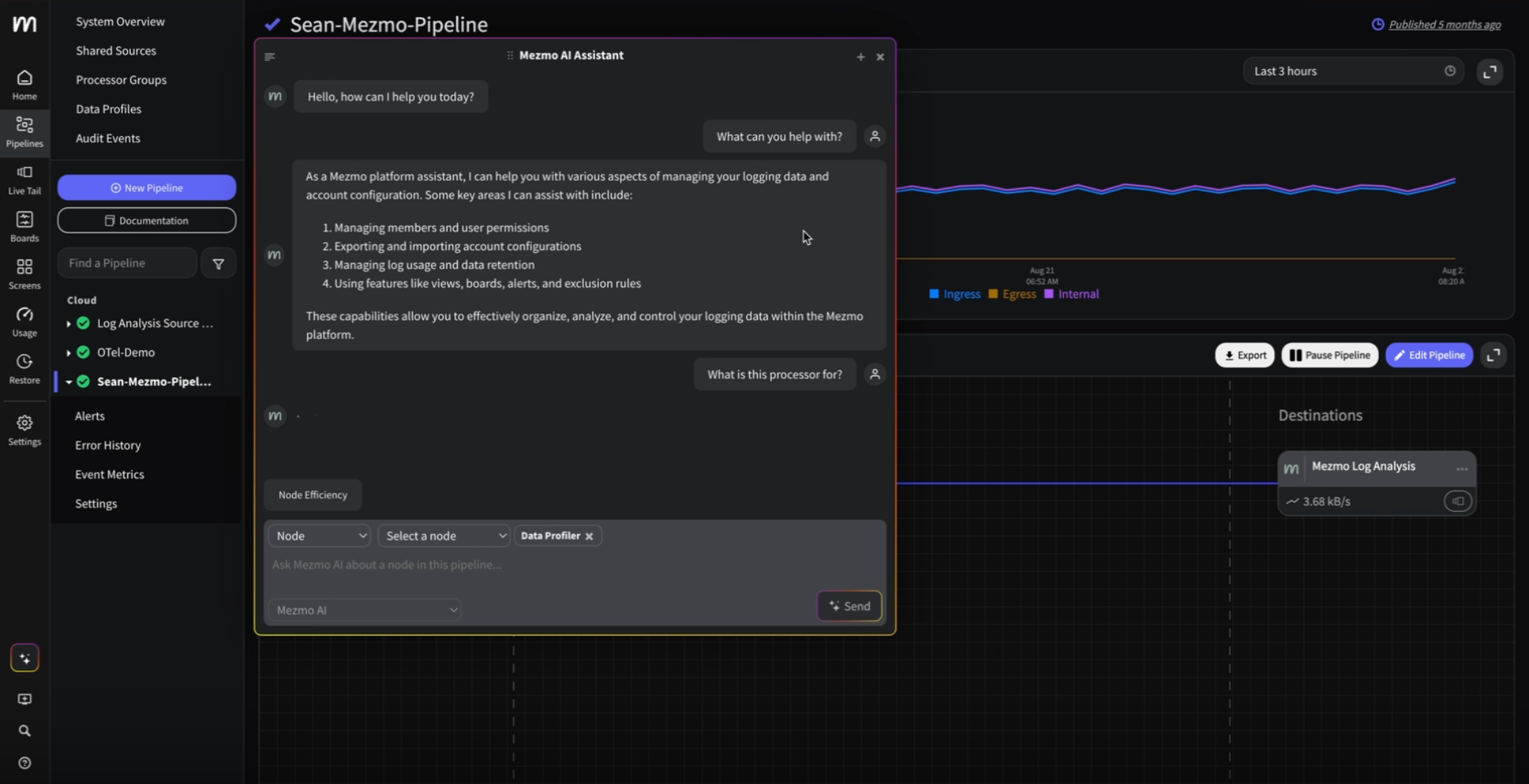
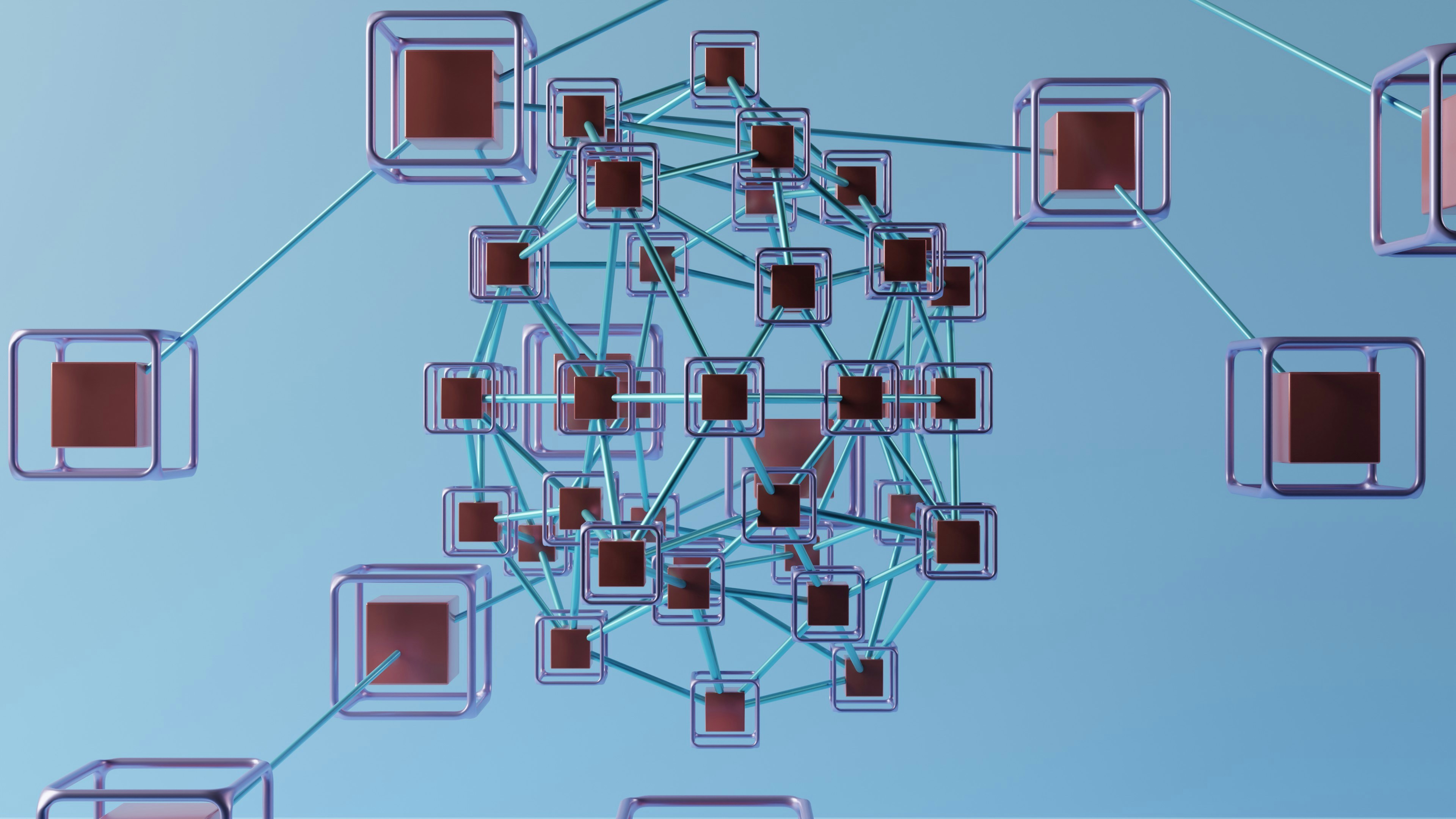

.png)




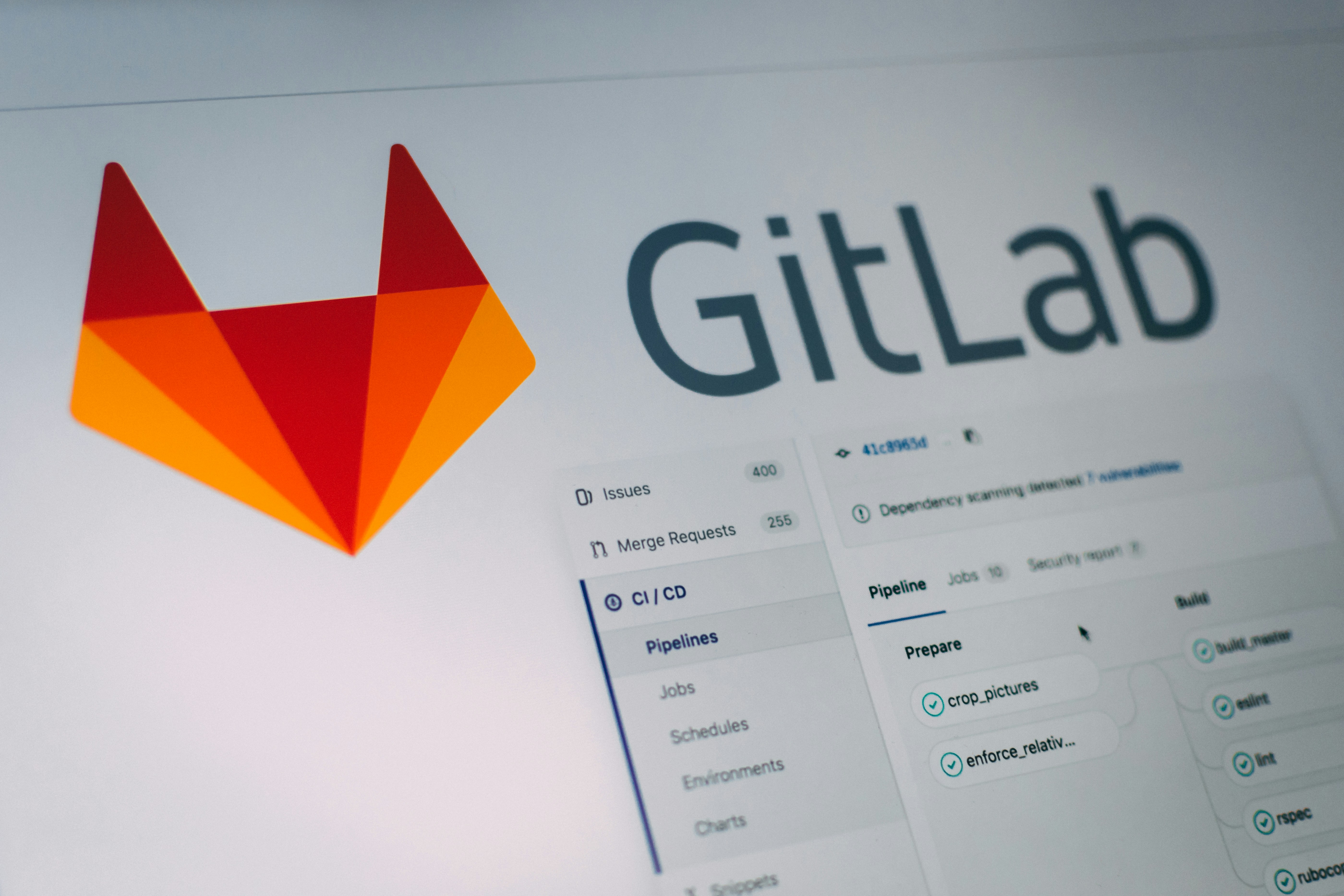
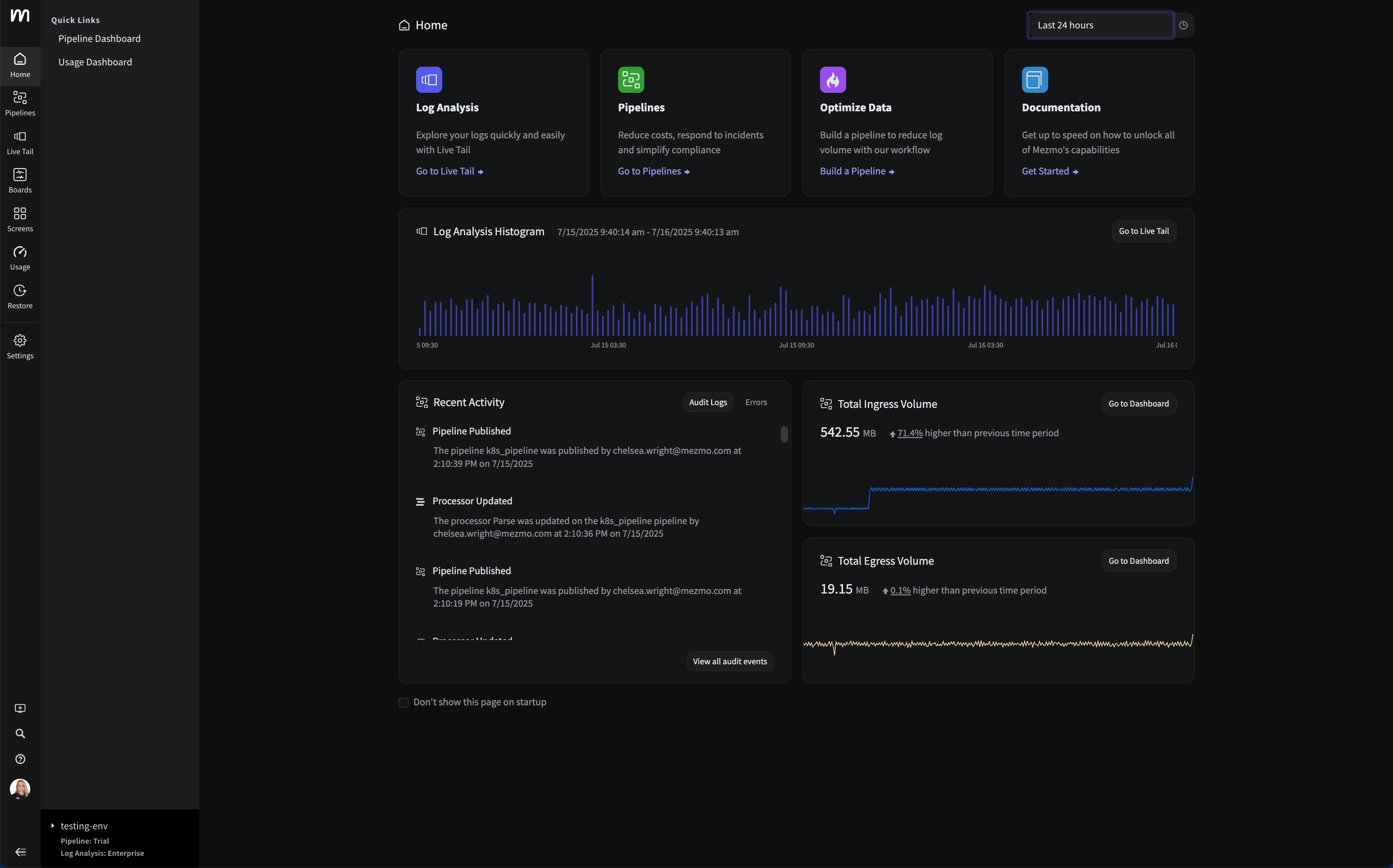


















.png)


































































